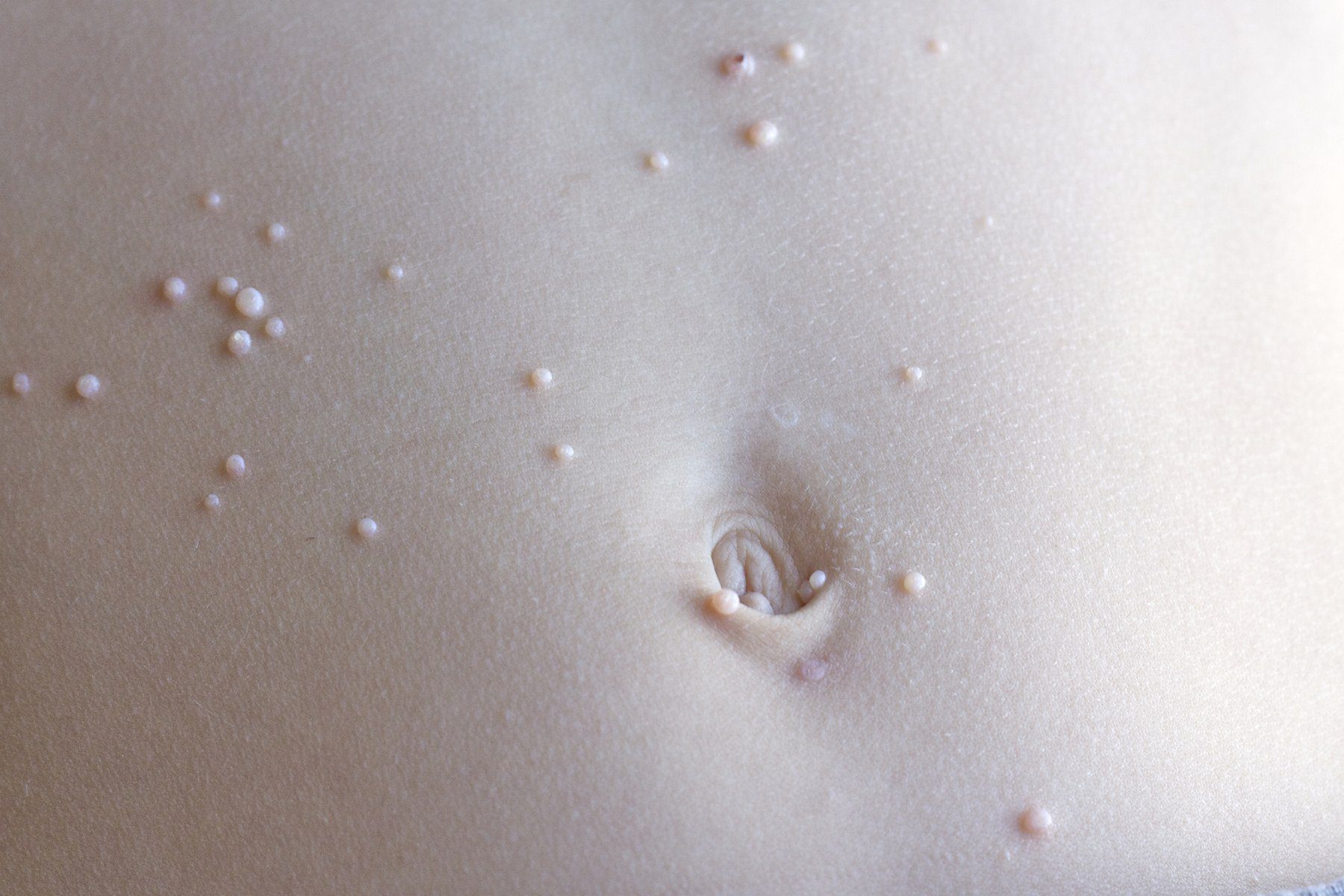What do molluscum look like?
Molluscum are usually small, flesh-colored or pink, dome-shaped growths, most commonly seen in children. They may appear shiny and have a small indentation in the center. Molluscum are often found in clusters on the skin of the chest, abdomen, arms, groin, or buttock. They can also involve the face and eyelids. Because they can be spread by skin-to-skin contact, molluscum are usually found in areas of skin that touch each other such as the folds in the arm or in the groin.
